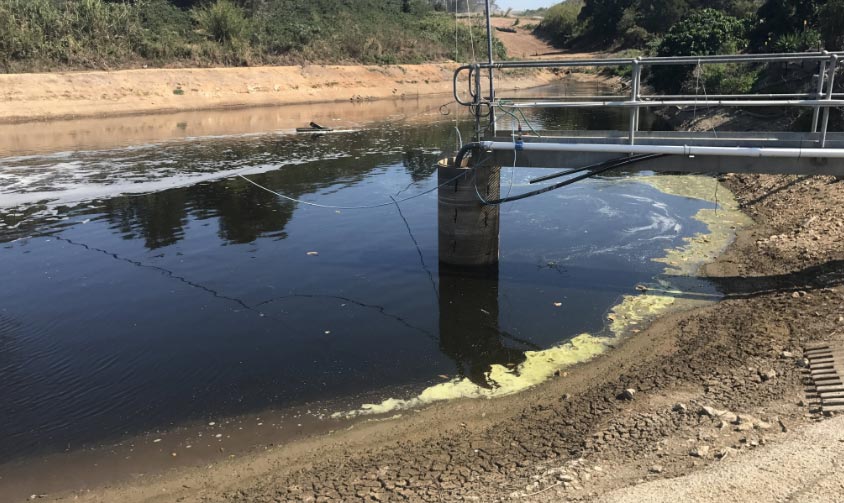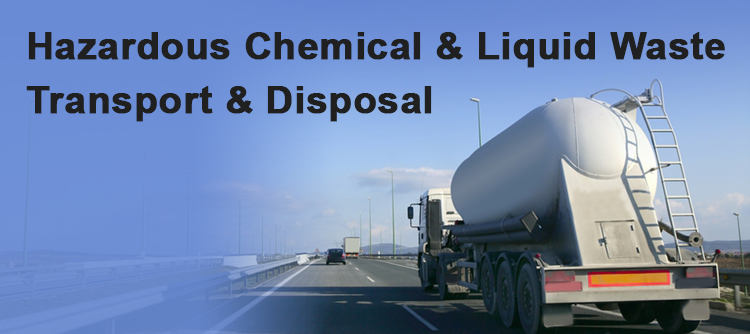Safe and Sustainable Liquid Waste Disposal: Your Go-To Service Provider
Safe and Sustainable Liquid Waste Disposal: Your Go-To Service Provider
Blog Article
How Fluid Garbage Disposal Works: An In-depth Summary of Strategies and Technologies Utilized

Overview of Liquid Waste Kind
The complexity of liquid waste kinds demands a thorough understanding of their characteristics and implications for disposal. Fluid waste can generally be categorized right into a number of types, including commercial, municipal, agricultural, and contaminated materials. Each category shows distinctive residential properties, calling for details monitoring methods to reduce environmental and wellness threats.
Industrial liquid waste stems from making procedures and typically contains a range of impurities, such as hefty metals, solvents, and natural compounds. Local liquid waste, mainly consisting of wastewater from households and business facilities, includes raw material, nutrients, and pathogens (industrial wastewater treatment). Agricultural fluid waste, consisting of overflow from ranches, may contain plant foods, pesticides, and animal waste, posturing dangers to water quality and ecological communities
Hazardous liquid waste is identified by its toxicity, reactivity, or prospective to create injury. Understanding these varied fluid waste kinds is essential for establishing reliable disposal methods and ensuring conformity with ecological laws.
Physical Treatment Techniques

Screening is the preliminary step, where larger fragments and particles are eliminated from the fluid waste utilizing displays or grates. This process safeguards downstream equipment from damages and guarantees smoother operation. Following testing, sedimentation makes use of gravitational pressure to separate solids from liquids. In sedimentation tanks, larger bits work out near the bottom, forming a sludge layer, while the made clear fluid can be additional treated.
Filtration is an additional crucial technique that includes passing the liquid via porous products, such as sand or membranes, to record smaller sized bits. This action improves the top quality of the liquid, making it suitable for succeeding treatment processes.

Chemical Therapy Methods
Chemical treatment methods are essential for successfully handling liquid waste, specifically in dealing with liquified and colloidal contaminants that physical techniques might not appropriately eliminate. These strategies utilize different chemical representatives to neutralize, precipitate, or change unsafe materials into much less harmful forms.
One usual method is coagulation and flocculation, where chemicals such as alum or ferric chloride are included in advertise the gathering of suspended particles. This process improves sedimentation, permitting less complicated removal of the resulting sludge. Furthermore, oxidation procedures, using agents like chlorine or ozone, are utilized to damage down intricate natural compounds and pathogens, providing the waste safer for discharge or further treatment.
Neutralization is one more important strategy, which adjusts the pH of acidic or alkaline waste streams to neutral degrees, protecting against possible harm to downstream systems and the environment. Additionally, advanced oxidation processes (AOPs) use mixes of oxidants and ultraviolet light to weaken relentless toxins, achieving a higher level of treatment efficiency.
Biological Treatment Processes
Organic treatment processes play an important function in the administration of liquid waste by using bacteria to decay organic issue and lower impurity degrees. These processes can be extensively categorized into aerobic and anaerobic therapies, each using details microbial areas to attain efficient waste deterioration.
Aerobic treatment entails the usage of oxygen to assist in the break down of organic products by germs. This process is typically carried out in useful link triggered sludge systems, where aeration containers supply a conducive environment for microbial development, bring about the oxidation of organic pollutants. The resultant biomass can be divided from treated effluent through sedimentation.
In comparison, anaerobic therapy happens in the lack of oxygen, depending on different microorganisms to break down organic issue. This technique is particularly useful for high-strength waste, as it produces biogas, a renewable power source, while reducing sludge manufacturing. Technologies such as anaerobic digesters are frequently utilized in community and commercial applications.
Both aerobic and anaerobic biological therapies not only reduce the ecological effect of fluid waste but additionally help with resource recuperation, making them necessary components of sustainable waste monitoring techniques. Their efficiency, effectiveness, the original source and versatility sustain their widespread application throughout various markets.
Arising Technologies in Disposal
Cutting-edge methods to liquid garbage disposal are swiftly developing, driven by advancements in technology and a boosting focus on sustainability. Amongst these arising technologies, membrane layer bioreactors (MBRs) have actually obtained grip for their capacity to combine biological treatment with membrane filtering, leading to premium effluent that can be reused in different applications. MBRs enable smaller footprints and much more effective operations compared to conventional systems.
An additional encouraging growth is making use of anaerobic food digestion incorporated with nutrient recuperation modern technologies, which not only treats fluid waste yet additionally produces biogas and recuperates beneficial nutrients like nitrogen and phosphorus. This dual benefit enhances source performance and lowers ecological impact.
Additionally, advanced oxidation procedures (AOPs) are being embraced for the deterioration of complex natural contaminants. These methods utilize effective oxidants and drivers to break down contaminants at the molecular degree, offering a very efficient service for challenging waste streams.
In addition, the assimilation of expert system and maker knowing in waste management systems is maximizing operational efficiency and anticipating upkeep, resulting in reduced prices and enhanced ecological compliance. These innovations reflect a substantial shift in the direction of more lasting and efficient liquid garbage disposal methods.
Verdict
In final thought, effective fluid waste disposal demands a detailed understanding of various methods and technologies. The combination of physical, chemical, and biological therapy methods makes sure the efficient administration of varied waste types. Furthermore, the introduction of innovative innovations boosts treatment effectiveness and advertises sustainability in waste management methods. By continually advancing these methods, it comes to be possible to resolve the growing obstacles related to fluid waste, inevitably adding to ecological protection and resource healing.
Liquid waste disposal is a discover this vital element of ecological management, requiring an extensive understanding of various techniques and innovations tailored to different waste types. Liquid waste can broadly be categorized into several kinds, consisting of industrial, municipal, farming, and unsafe waste. Agricultural fluid waste, consisting of overflow from farms, may have plant foods, pesticides, and pet waste, posturing risks to water quality and communities.
Various physical treatment approaches play an important function in managing liquid waste effectively - industrial wastewater treatment.In final thought, reliable liquid waste disposal necessitates a detailed understanding of numerous methods and innovations
Report this page